Globe Reader, The Heroes, or Greek Fairy Tales for My Children
1885
Illustrated with plates. 255 pages (Greek Heroes ~ 1900 ~
Thomas Y. Crowell & Co.)
ins: 646 Washington Blvd
Online
eText Version: http://digital.library.upenn.edu/webbin/gutbook/lookup?num=677
Alternate
Download of Text
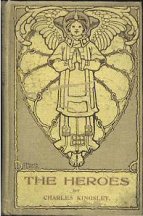 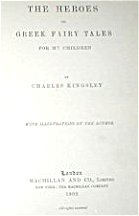 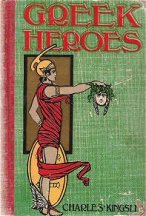 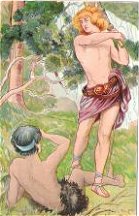
Read about Jason, who brought
back the golden fleece with the help of the Greek heroes known as Argonauts;
Theseus, who fought the minotaur in the labyrinth and found his way out
again with the help of a length of string; and Perseus, who decapitated
the Gorgon Medusa. Why did Kingsley call his book "Heroes"?
Kingsley answers, "Now,
why have I called this book 'The Heroes'? Because that was the name which
the Hellens gave to men who were brave and skilful, and dare do more than
other men. At first, I think, that was all it meant: but after a time it
came to mean something more; it came to mean men who helped their country;
men in those old times, when the country was half-wild, who killed fierce
beasts and evil men, and drained swamps, and founded towns, and therefore
after they were dead, were honoured, because they had left their country
better than they found it. And we call such a man a hero in English to
this day, and call it a 'heroic' thing to suffer pain and grief, that we
may do good to our fellow-men."
PREFACE:
MY DEAR CHILDREN,
OTHER:
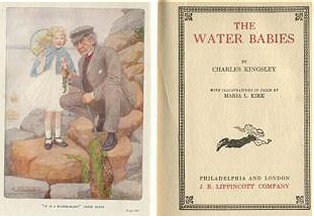 Poems
~ 1884 Poems
~ 1884
Hereward the Wake ~ 1893 ~ MacMillan and Co.
Madam How and Lady Why: or, first lessons in earth lore for children.
~ 1870 ~London, 1870 ~ Kingsley’s last book for children, exploring the
problems of geology.
At Last: A Christmas in the West Indies ~ 1871
Town Geology ~ 1872
The Water Babies ~ 1863/1917 ~ J.B. Lippincott Company
Online
eText Edition: http://www.worldwideschool.org/library/books/youth/classic/TheWaterBabies/Chap1.html
Two Years Ago ~ 1895
Westward Ho! or the Voyages and Adventures of Sir Amyas Leigh, Knight,
of Burrough, in the County of Devon – In the reign of Her Most Glorious
Majesty Queen Elizabeth ~ 1920 ~ NY: Charles Scribner’s Sons ~ 14 full-page
color illustrations by N. C. Wyeth
http://www.worldwideschool.org/library/books/lit/western/WestwardHo/toc.html
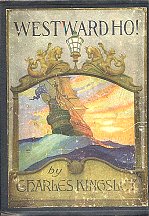 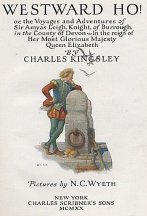 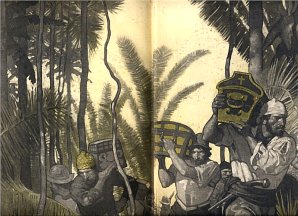 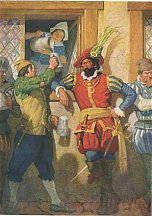
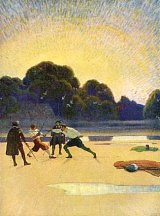 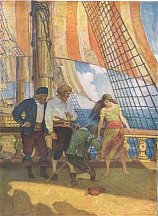 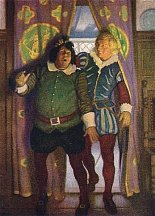 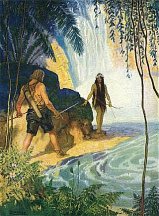 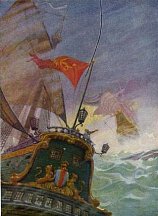
The W.C. Wyeth Gallery
|
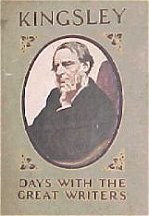 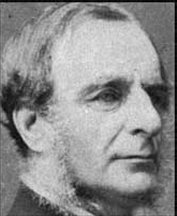 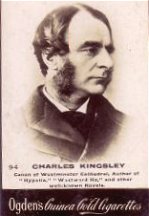
Charles
Kingsley Church of England
parson, novelist, Christian Socialist, Protestant controversialist, "muscular
Christian," poet, and amateur naturalist. Born on July 12,
1819, to Charles Kingsley, Sr., and Mary Lucas Kingsley, he counted among
the early formative influences on his life his witnessing of the Bristol
Riots in 1831. In 1832 he studied with Derwent Coleridge and in 1837
at King's College, London; in 1838 he matriculated at Magdalene College,
Cambridge. He met Frances (Fanny) Grenfell, with whom he fell
almost immediately in love in July 6,1839. In February 1842, Kingsley
left Cambridge to read for Holy Orders; in July of that year he became
curate of Eversley Church in Hampshire, which he served for the rest of
his life. In January 1844, he and Fanny were married; in May he became
rector of Eversley Church, and during the summer began corresponding with
Frederick Denison Maurice, whose influence permeated every aspect of Kingsley's
professional life and whom he addressed as "my Master."
Kingsley moved onto the public stage in 1848 in response
to the working class agitation that climaxed in the Chartist collapse of
that year. As a result of his interest in the condition of the working
classes, he joined with John Malcolm Ludlow, Frederick Denison Maurice,
and others in forming the Christian Socialist movement. Although
he published "Workmen of England" anonymously, he adopted the pseudonym
"Parson Lot" for an article, "The National Gallery," which he placed in
a new journal Politics for the People. He also used this pseudonym for
a series called "Letters to the Chartists."
Despite his interest in the problems of urban workers,
Kingsley turned for his first novel to the plight of agricultural labourers.
During 1848 he addressed their plight when his novel Yeast appeared serially
in Fraser's Magazine. Two other works of note also appeared in this year:
The Saint's Tragedy, Kingsley's only major effort at writing a tragedy,
and "Why Should We Fear the Romish Priests?" Both of these works
voice his early anti-Catholicism, which became a major theme of much of
his writing and in the 1860s brought on his disastrous clash with John
Henry Newman.
Kingsley's Christian Socialist sympathies voiced through
the pseudonym "Parson Lot" continued to find expression in print at least
through 1851. However, in 1852 The Christian Socialist failed, and
Kingsley's interests began to change. In that year, for example,
he pilloried the American New England Transcendentalists in Phaeton; or
Loose Thoughts for Loose Thinkers, and turned to historical fiction with
the serial publication of Hypatia; or New Foes with an Old Face in Fraser's
Magazine. Phaeton satirised Ralph Waldo Emerson as "Professor Windrush,"
whose teaching he characterised as "Anythingarianism."
In 1856, Kingsley turned his interest in heroes and heroism
to preparing a volume for children. The Heroes; or, Greek Fairy Tales for
My Children is a retelling of ancient tales and indicates his growing interest
in writing for children, an interest to which he would return in 1862 with
The Water-Babies.
The 1860s brought both deserved recognition and the climax
of his dispute with John Henry Newman that had been brewing for years.
Largely on the strength of his historical fiction Kingsley was appointed
Regius Professor of Modern History at Cambridge in 1860; in 1861 he was
appointed tutor to the Prince of Wales. The Water-Babies: A Fairy Tale
for a Land-Baby, arguably his most enduring work, appeared serially in
Macmillan's Magazine in 1862 and was published in volume format in 1863.
The Water-Babies touches upon most of Kingsley's favourite
themes: the working conditions of the poor, in this case those of chimney
sweeps; education; sanitation and public health; pollution of rivers and
streams; and evolutionary theory. In the central character's spiritual
regeneration, Kingsley presents a vision of nature as the tool of divine
reality, which Thomas Carlyle and F. D. Maurice had taught him underlies
the imperfect human world. Viewing nature as governed by a redemptive
spirit allowed Kingsley to remain untroubled by Darwinism.
Although Kingsley contemplated writing other novels, he
never did. Instead, he edited Fraser's Magazine briefly in 1867.
In 1869 he resigned his Cambridge professorship, an academic position in
which he had never felt comfortable. In 1868 and 1869 he published a series
of articles for children; these were collected and issued in 1870 as Madam
How and Lady Why: First Lessons in Earth Lore for Children. A tour of the
West Indies followed in 1870, producing notes which became At Last: A Christmas
in the West Indies in 1871. In 1872 he published Town Geology and
became President of the Midland Institute in Birmingham. In the next
year he collected a group of prose essays, publishing them as Prose Idylls,
New and Old. In 1874 he published Health and Education and
made an exhausting six-month tour of the United States. When he returned
to England he was worn out. On January 23, 1875, he died.
Biograpy
Reference
|


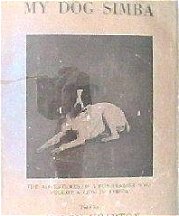
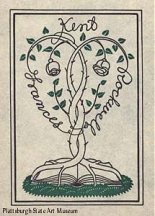
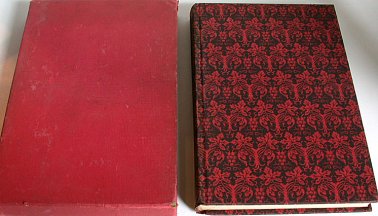
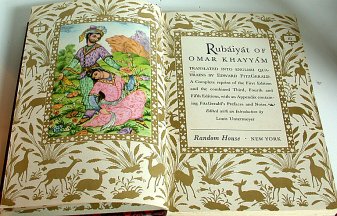
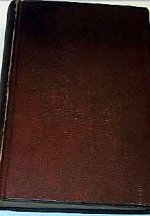
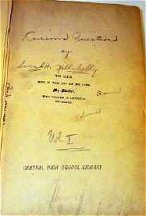
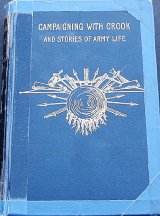
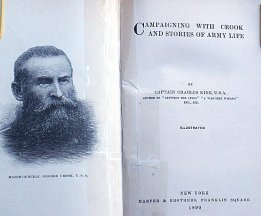
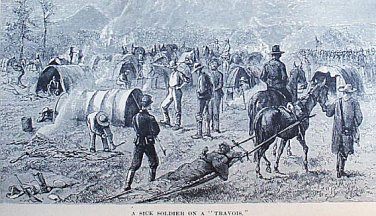
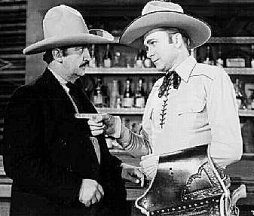
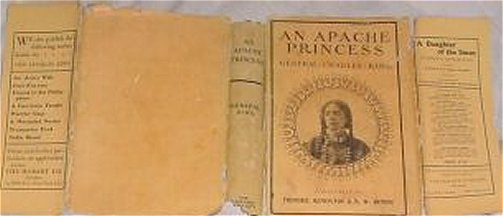
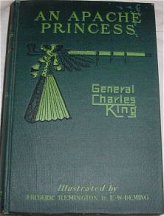
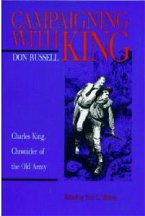
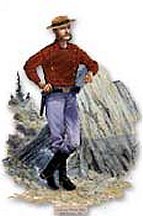 Captain
Charles King (1844-1933) served seventy years in America’s military
forces and was decorated for fighting in five wars, a living rebuttal to
the notion that old soldiers fade away loquaciously in their downtown clubs.
But he did spin yarns. In fact, he became one of the best known chroniclers
of the frontier army and the Indian wars of the 1870s, and an immensely
popular writer of fiction. From his pen flowed dozens of novels and histories
that made him the American Kipling. Long overdue, Campaigning with King
is the first study of that remarkable man’s military and literary careers,
written after his death by Don Russell, a respected authority on frontier
history. Russell had talked with and corresponded with King since the late
1920s to produce an authentic and colorful book. "If you know King’s life,"
Russell writes, "you can trace nearly every episode in his stories to some
personal experience, and that includes some that seem wildly extravagant.
But his was an age of melodrama in life as well as on the printed page
-- Custer and Buffalo Bill are controversial figures today just because
we cannot believe anyone like them ever existed. King was in the campaign
that resulted in Custer’s Last Stand, he saw Buffalo Bill fight Yellow
Hand, he knew Winfield Scott, Abraham Lincoln, Ulysses S. Grant, Philip
H. Sheridan, Nelson A. Miles, and Arthur MacArthur and his son Douglas....
His life was a greater romance than any he created, and he actually lived
all the romance he created." Don Russell, who died in 1986, was a co-founder
of the Chicago Corral of Westerners and of its parent organization, Westerners
International, and the lifelong editor of the Westerners Brand Book. His
many publications include The Lives and Legends of Buffalo Bill (1960),
and Custer~ Last, or, The Battle of the Little Big Horn in Picturesque
Perspective (1968). Before Russell’s death, Paul L. Hedren received his
endorsement to edit the manuscript. A Charles King enthusiast of a more
recent era Hedren profiles the Russell-King partnership in his introduction.
Paul L. Hedren is superintendent of the Fort Union Trading Post National
Historic Site and the author of First Scalp for Custer: The Skirmish at
Warbonnet Creek, Nebraska, July 17, 1876 and Fort Laramie in 1876. Chronicle
of a Frontier Post at War (1988).
Captain
Charles King (1844-1933) served seventy years in America’s military
forces and was decorated for fighting in five wars, a living rebuttal to
the notion that old soldiers fade away loquaciously in their downtown clubs.
But he did spin yarns. In fact, he became one of the best known chroniclers
of the frontier army and the Indian wars of the 1870s, and an immensely
popular writer of fiction. From his pen flowed dozens of novels and histories
that made him the American Kipling. Long overdue, Campaigning with King
is the first study of that remarkable man’s military and literary careers,
written after his death by Don Russell, a respected authority on frontier
history. Russell had talked with and corresponded with King since the late
1920s to produce an authentic and colorful book. "If you know King’s life,"
Russell writes, "you can trace nearly every episode in his stories to some
personal experience, and that includes some that seem wildly extravagant.
But his was an age of melodrama in life as well as on the printed page
-- Custer and Buffalo Bill are controversial figures today just because
we cannot believe anyone like them ever existed. King was in the campaign
that resulted in Custer’s Last Stand, he saw Buffalo Bill fight Yellow
Hand, he knew Winfield Scott, Abraham Lincoln, Ulysses S. Grant, Philip
H. Sheridan, Nelson A. Miles, and Arthur MacArthur and his son Douglas....
His life was a greater romance than any he created, and he actually lived
all the romance he created." Don Russell, who died in 1986, was a co-founder
of the Chicago Corral of Westerners and of its parent organization, Westerners
International, and the lifelong editor of the Westerners Brand Book. His
many publications include The Lives and Legends of Buffalo Bill (1960),
and Custer~ Last, or, The Battle of the Little Big Horn in Picturesque
Perspective (1968). Before Russell’s death, Paul L. Hedren received his
endorsement to edit the manuscript. A Charles King enthusiast of a more
recent era Hedren profiles the Russell-King partnership in his introduction.
Paul L. Hedren is superintendent of the Fort Union Trading Post National
Historic Site and the author of First Scalp for Custer: The Skirmish at
Warbonnet Creek, Nebraska, July 17, 1876 and Fort Laramie in 1876. Chronicle
of a Frontier Post at War (1988).
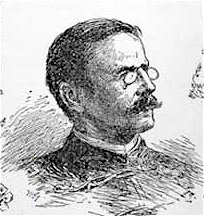
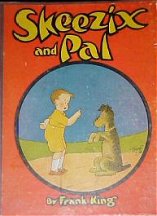
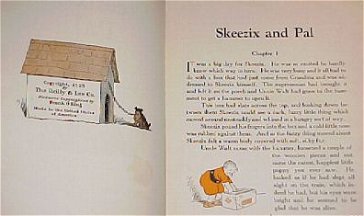
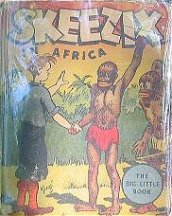




 Poems
~ 1884
Poems
~ 1884




















